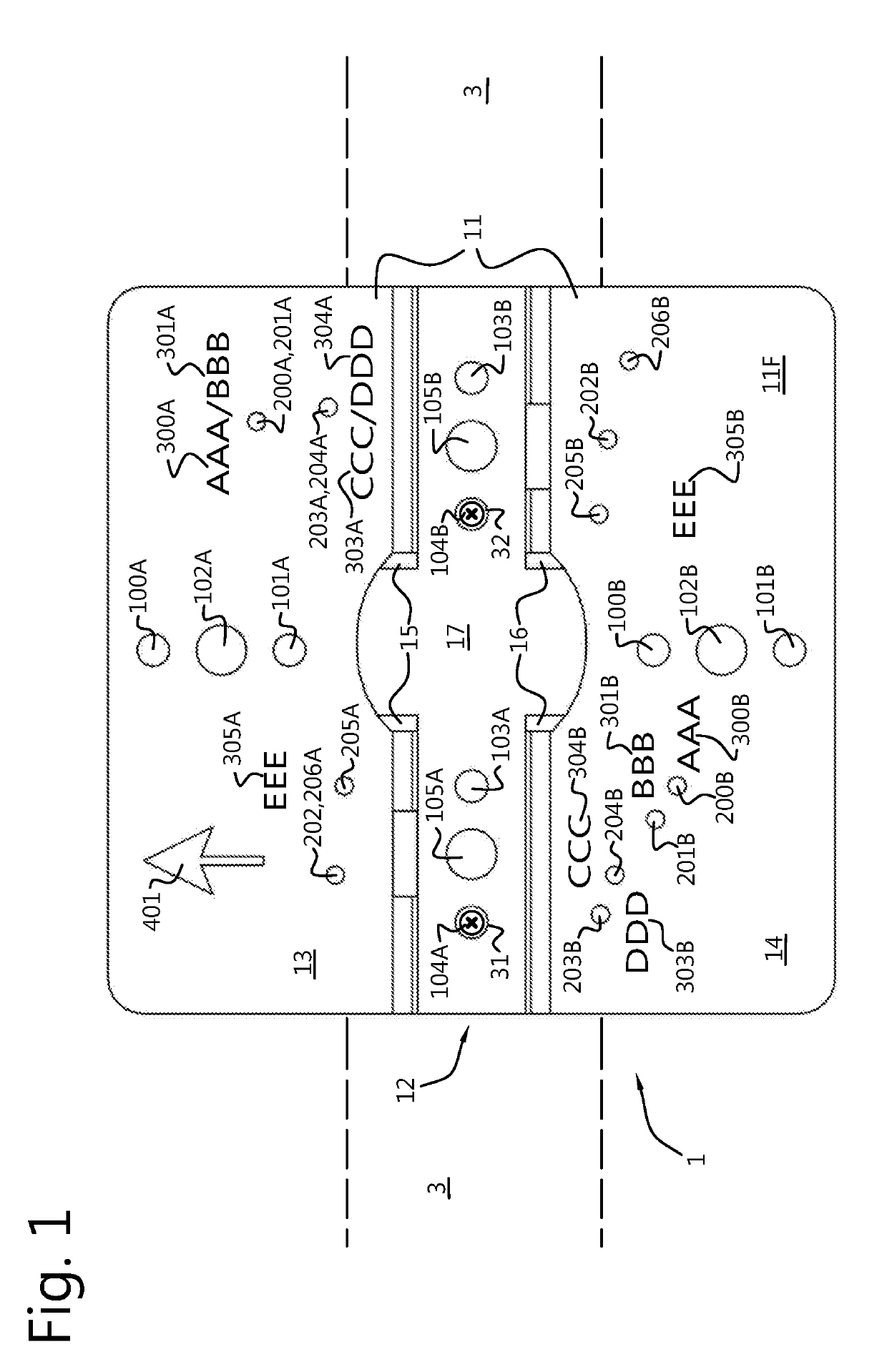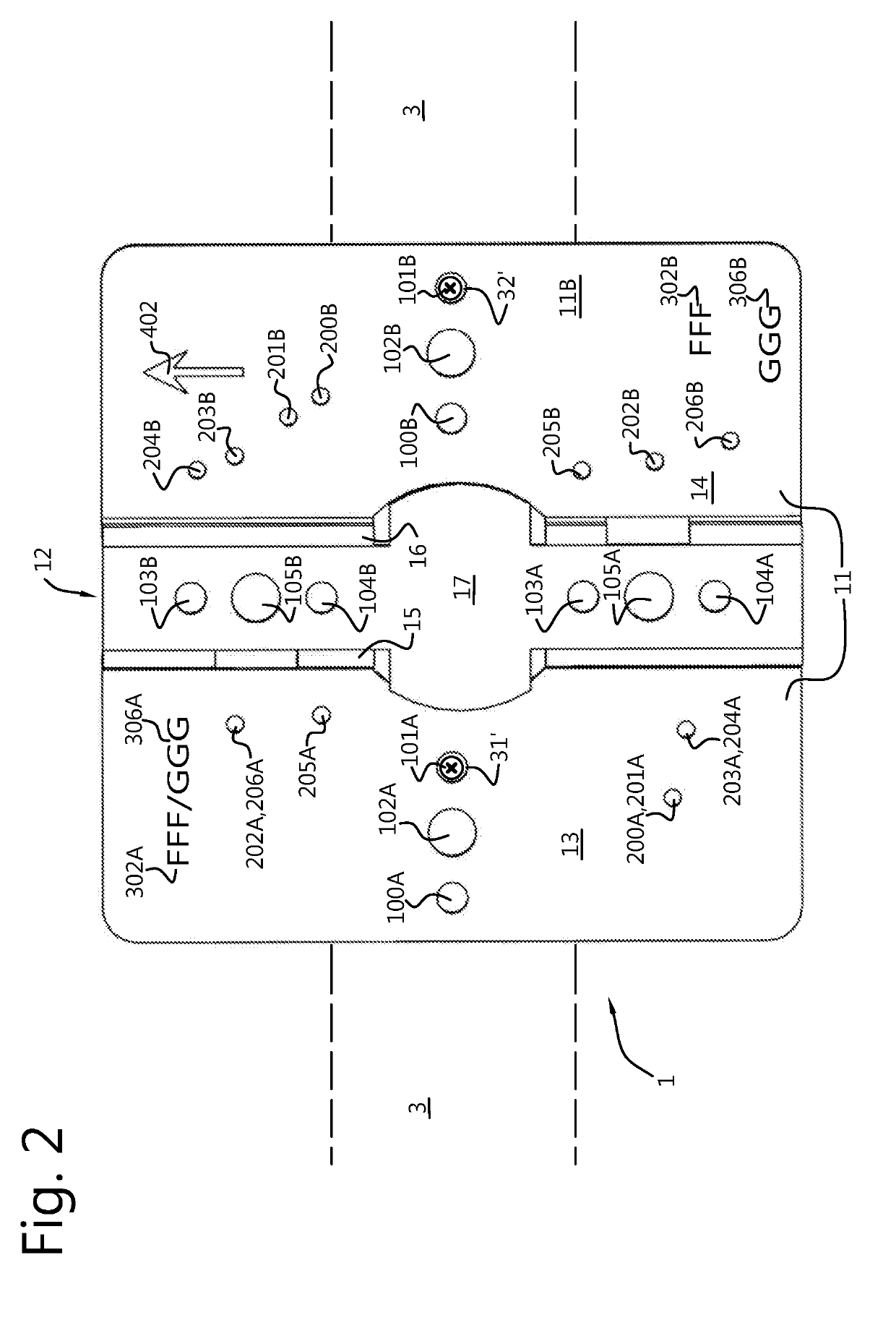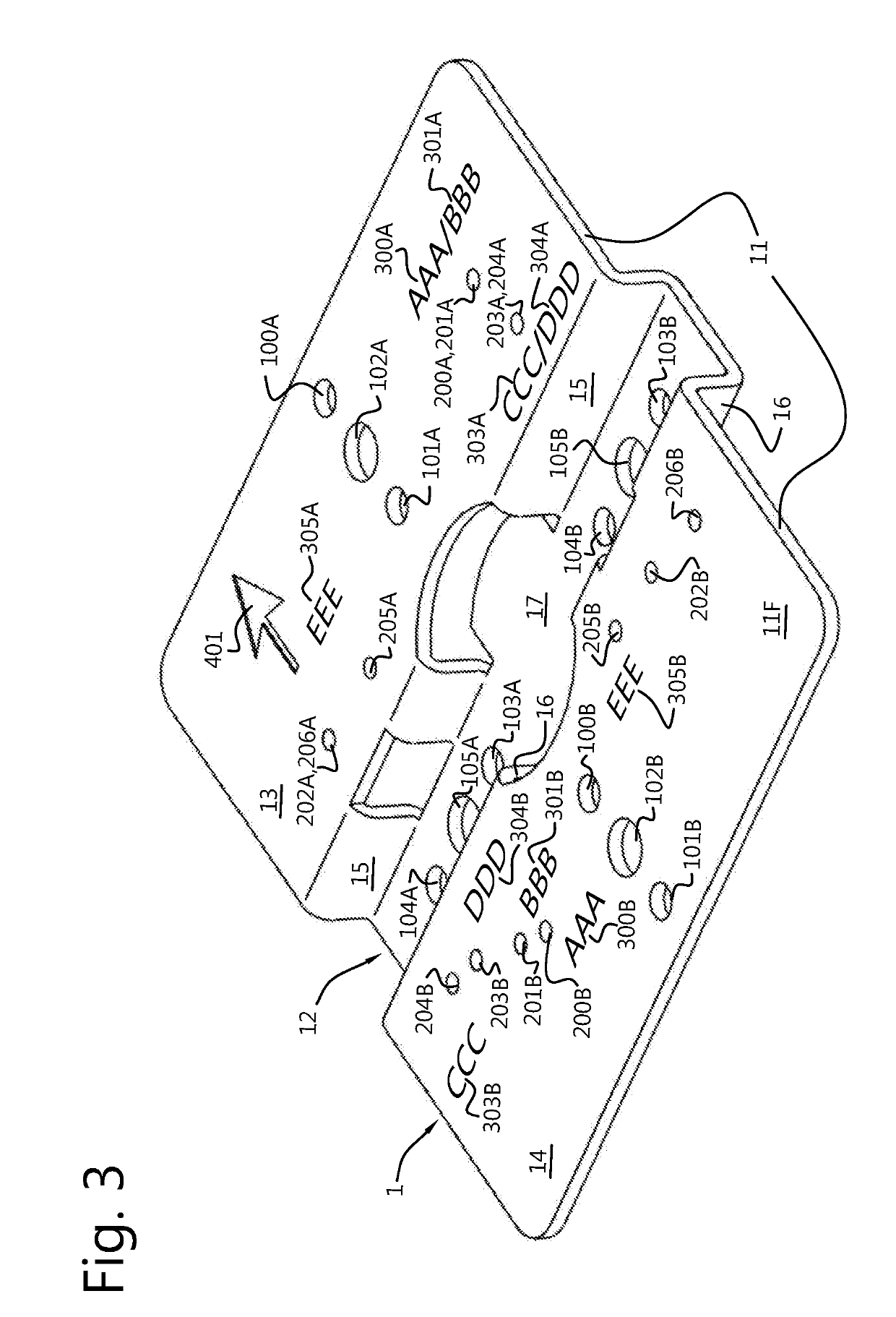Reinforcement element for the securing of a mixing valve to a mounting rail
- Summary
- Abstract
- Description
- Claims
- Application Information
AI Technical Summary
Benefits of technology
Problems solved by technology
Method used
Image
Examples
Embodiment Construction
[0035]With reference to FIGS. 1-3, a reinforcement element 1 for the securing of a mixing valve, e.g. a shower valve, to a mounting rail 3 is shown. FIG. 1 shows a front view of said reinforcement element 1, FIG. 2 shows a rear view of the reinforcement element 1, and FIG. 3 shows an isometric view from a front face 11F of the reinforcement element 1.
[0036]The reinforcement element 1 comprises a mounting plate 11 that comprises a first plate half 13 and a second plate half 14 which are spaced apart by a centre portion 12 and are generally arranged in a common plane. The plane spanned by the first plate half 13 may be inclined about an absolute value of up to 30 degrees with respect to the plane spanned by the second plate half 14. In other words, the first plate half 13 and the second plate half 14 may extend at angles of between 150 degrees and 210 degrees with respect to each other. Preferably, the plate halves 13, 14 extend at an angle of approximately 180 degrees with respect to...
PUM
 Login to View More
Login to View More Abstract
Description
Claims
Application Information
 Login to View More
Login to View More - R&D
- Intellectual Property
- Life Sciences
- Materials
- Tech Scout
- Unparalleled Data Quality
- Higher Quality Content
- 60% Fewer Hallucinations
Browse by: Latest US Patents, China's latest patents, Technical Efficacy Thesaurus, Application Domain, Technology Topic, Popular Technical Reports.
© 2025 PatSnap. All rights reserved.Legal|Privacy policy|Modern Slavery Act Transparency Statement|Sitemap|About US| Contact US: help@patsnap.com



